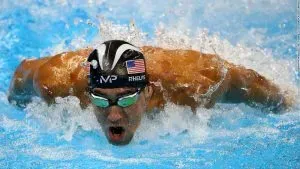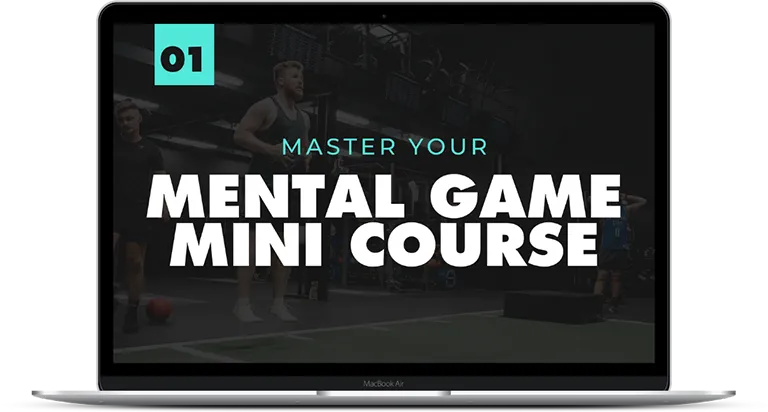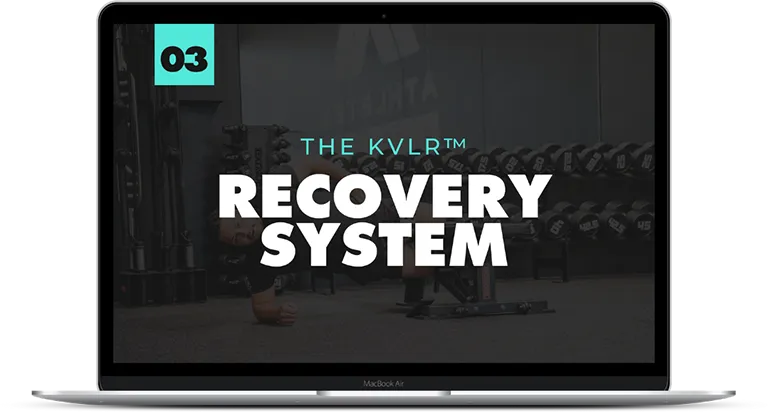Athletes Authority
The blog

How To Use Visualisation To Improve Athlete Performance
FOR A LOT OF ATHLETES, A CONSISTENT VISUALISATION PRACTICE IS THE MISSING LINK TO AN ATHLETE AND THEIR BEST PERFORMANCE. THAT’S EVEN THOUGH THEY KNOW, IT’S WHAT THE BEST DO ON A REGULAR BASIS. LEARN THE SIMPLE STEP-BY-STEP PROCESS THAT WILL HELP YOU START, AND BENEFIT FROM, A VISUALISATION PRACTICE.
Visualization Techniques for Athletes: How To Visualise Success In Sports
“No matter what little thing goes wrong, I have already prepared for it thousands of times in my mind. I am ready for anything.”
Michael Phelps, the world’s most decorated swimmer.
Visualization Techniques for Athletes: How To Visualise Success In Sports
Visualization Techniques for Athletes: How To Visualise Success In Sports
Imagine for a moment that you could continue training long after your body was out of energy. Imagine that you could continue to work on your technique, long after you got home from practice. Imagine for a moment, that you could race multiple times a day, every day, and never get fatigued.
It sounds ridiculous, right?
Almost like you’re about to get marketed some proprietary energy supplement that promises to keep you going, and going, and going.
But this is not that… and I’m not about to sell you anything.
This ‘thing’ is something that most elite athletes have been using for generations, and, it’s completely free. It’s also incredibly simple, that even an 11-year old kid can do it… but it will change your performance in a way you wouldn’t think is possible. It might even help you become the best in the world (more on that later)…
It’s mental repetition training. It is the art of visualisation for successful athlete performance and is best thought of as practice for the mind.
There is an old adage that ‘seeing is believing’.
Once you can witness something first hand, a switch goes off in your brain to approve it as not just plausible, not just possible, but, more specifically, achievable.
Whenever we see something achieved for the first time in sport, it goes from being something that’s ‘impossible’ to something that’s ‘possible’; it triggers a radical shift in thinking.
For the world’s greatest athletes, they already believe in themselves and their ability; they have first-hand experiences achieving incredible things. Not only did they live that moment, but then they watched it back on the News, on YouTube and were tagged a few thousand times on social media.
These moments of brilliance when brought together, create a highlight reel of achievement.
While commonplace for elite athletes, creating a highlight reel is less common in the amateur ranks. While some athletes will put together a ‘highlights package’ for purposes of applications to teams through an agent, even these athletes may only watch it a couple of times.
But a highlights package can serve a much greater purpose than marketing yourself to agents and coaches — it can be used to help reinforce good behaviours and repeat your best performances. This works because we have ‘mirror’ neurons, which are triggered when we observe behaviour; indeed, we can learn, and reinforce learning, by seeing.
This is a powerful learning tool that has been harnessed by great coaches around the world and recommended almost unanimously by sports psychologists — creating a highlight reel for yourself helps you visualise your success.
But in reality, most athletes don’t have access to ‘footage’ to create a highlight and for the purposes of improving your mental game, it’s not as good as visualising your best performance, anyway.
Visualization Techniques for Athletes: How To Visualise Success In Sports
How Michael Phelps Used Visualisation To Become The Greatest Swimmer To Have Ever Lived
Visualization Techniques for Athletes: How To Visualise Success In Sports
When a young Michael Phelps began swimming pre his teenage years, he had a lot of trouble managing his focus.
He would fidget a lot, struggling to stay engaged at school. No matter how much swimming he did at the North Baltimore Aquatics Club, it didn’t really seem to slow the young boy down.
At one point, his Mum was told by a teacher who had reached her wits end: “Debbie, your son will never be able to focus on anything.”
At 11-years old, Michael’s coach Bob Bowman identified an opportunity. He realised that Michael could benefit from focus and relaxation techniques, which included completing ‘mental reps’ and visualising his best swimming performance in his mind.
Bowman called this his ‘mental videotape’. It was a mental recording, a highlight reel of sorts, of Phelps’ races. You can see Bowman & Phelps discuss his mental videotape here.
Visualization Techniques for Athletes: How To Visualise Success In Sports
Every night before bed, Phelps would visualize every aspect of his race, starting from walking out of the locker room, standing on the blocks, racing with speed and tenacity, and finishing with a triumphant celebration when he won.
Bowman would later go on to quote:
“We figured it [imagery] was best to concentrate on these tiny moments of success and build them into mental triggers… It’s more like his habits had taken over. The actual race was just another step in a pattern that started earlier that day and was nothing but victories. Winning became a natural extension.”
Bob Bowman, Phelps’ Swimming Coach
This winning strategy of a mental highlight reel would see thousands of uses in his 16-year athletic career and would be a turn-key strategy that underpinned his incredible success. On the topic of visualisation, Phelps had this to say:
“Any small thing that could go wrong, I am ready and prepared for.”
Phelps’ highlight reel was so real, that his brain had already raced that high-pressure race a few thousand times in his head. His brain had already seen him win a thousand times. His chimp brain, the brain that responds to threats, was calm and unphased by the immense pressure of competition because it had been there and done that, many times before.
Phelps is not an outlier. His commitment to mental repetitions done daily is not unique to him. This habit of success is done by almost every world-class athlete.
So if this is so powerful, why is it rarely a habit of those wanting to perform at their best?
Most of the time, it feels a bit taboo. Strange, even. So here is a breakdown of how to apply mental repetition training step-by-step so you can harness its effectiveness without feeling like you’re out of place.
Visualization Techniques for Athletes: How To Visualise Success In Sports
An Overview of Mental Repetition Training (MRT)
Visualization Techniques for Athletes: How To Visualise Success In Sports
Visualization Techniques for Athletes: How To Visualise Success In Sports
Mental Repetition Training is essentially the practice of ‘walking through in your mind your best performance’ over, and over again.
Whether it’s sinking the winning 3 on the buzzer to win, putting for birdie on the 18th to win, or surging in the final lap of a race, creating a clip of the best performance in your mind allows your mirror neurons to get to work, forming pathways with your motor units and more importantly replicating the physiological state that simulates the real performance. With enough MRT, you can win a race, make the shot, or score the try a few thousand times, before that moment ever eventuates in reality
Combining this proven strategy of visualisation, we can package the feel-good dopamine kick that comes from watching a good highlight reel on TV with the proven effectiveness of visualisation as a training tool and create a personal highlight reel for your mind. With a highlight reel in your arsenal, you can call upon this every day, from anywhere to complete mental reps. Whether you close your eyes in the shower or as you go to bed, you can always be executing your best performance.
Over time, that highlight reel of your best performances becomes so concrete, it’s as if it really happened.
Dr Jason Selk, Sports Psychologist for the St Louis Cardinals, uses a step-by-step process for establishing a visualisation practice, which we’ve adapted and simplified here.
Visualization Techniques for Athletes: How To Visualise Success In Sports
STEP 1: CHOOSE YOUR CAMERA ANGLE
Visualization Techniques for Athletes: How To Visualise Success In Sports
There are three ways to ‘record’ your highlight reel. For those who are severely lacking in confidence, and have no reason to believe they could ever achieve the task, you may find it beneficial to take a third-person angle — where you’re in the stands or above someone else who is completing the performance flawlessly. This may be a real person, perhaps an athlete you look up to and admire.
The second option would be to watch yourself, from the same angle, complete the action flawlessly as if you were watching yourself from a video recording.
Finally, the third angle — and perhaps the most effective — would be where the camera lens is your eyes, and you see, and embody yourself, as you perform the skill. This is the most effective for a couple of reasons — in this angle, you’re most likely to tap into your ability to create road maps of neurons that can help execute the skill; what most people call muscle memory. When the highlight reel is you in the first person, the neural signal fires off in the same sequence as it would if you were actually performing the action, even though you’re not physically doing it.
If you have the mental focus to visualise from the first-person angle, then go for it, but trust your instincts and go with what feels right for you.
Visualization Techniques for Athletes: How To Visualise Success In Sports
STEP 2: ATD — ATTENTION TO DETAIL
Visualization Techniques for Athletes: How To Visualise Success In Sports
When visualisation is done right, it doesn’t only include sight; it accounts for what you’d hear, like cheers in the crows, what you’d feel, like the texture of a baseball in your hand, what you’d feel internally and emotionally, as you calmly and confidently execute on the action. The more you can be immersive, the less the real thing is going to feel foreign to you.
Visualization Techniques for Athletes: How To Visualise Success In Sports
STEP 3: KEEP IT SHORT AND SWEET
Visualization Techniques for Athletes: How To Visualise Success In Sports
Unlike physical training, mental repetition doesn’t fatigue you, but, it still benefits from a dedicated yet discrete, practice. There are a few strategies you can try to see what works best.
The first is to do a mental rep every time before you actually execute the action in reality. In a start-stop sport like a 100m sprint, you’d visualise your approach to the blocks, your set up, the internal dialogue in your head, the announcer cues, the gun going off, the acceleration, the transition, the force through the ground as you approach max velocity, the commitment to the final twenty and then crossing the finish line.
You’d then approach the blocks, and do that in practice. This will work for all non-cyclical sports that we’d consider ‘endurance’ exercise; it wouldn’t be feasible to visualise an Ironman before you actually race it!
The other approach is to complete mental reps before bed as Michael Phelps did. You might rehearse an upcoming event, repeat a practice you’d just completed, or visualise you performing at the highest level you could imagine. Whichever way you go, consistency will be key.
Visualization Techniques for Athletes: How To Visualise Success In Sports
STEP 4: IDENTIFY YOUR OPTIMAL AROUSAL FOR VISUALISATION
Visualization Techniques for Athletes: How To Visualise Success In Sports
Visualization Techniques for Athletes: How To Visualise Success In Sports
Some athletes respond well to pre-competition jitters. For others, it’s more like crippling anxiety. Visualisation can help you regulate your arousal by artificially exposing yo’ to high-pressure situations well in advance of them actually happening.
For those that may not have heard that term before, your arousal state describes your energy level in the lead up to training and competition. Just like an amplifier can be dialled up and back to adjust the volume of the sound waves, so can your energetic state. Being able to identify your optimal state of arousal will help you know whether you need to ‘amp-up’ or ‘amp-down’ in the lead up to an important performance. To help you figure that out, ask yourself the following questions:
Out of 10 where one is falling asleep and 10 is about to crash through a brick wall, what energy level usually allows me to perform at my best?
What do I feel when I’m performing at my best? What emotions are prominent?
In my experience, what makes me feel ‘off’ my game?
Use these question to help your arousal line up with your visualisations, but if you’re doing this before bed as part of an evening routine, it may be best to skip this step if you need to ‘amp up’.
STEP 5: USE FAST-FORWARD, REWIND AND REPLAY, BUT ALWAYS PLAY THE KEY MOMENTS AT GAME SPEED
When you get started with visualisation, you may not be able to get it right in your mind early on. That’s totally OK — at the end of the day, this is a practice like everything else. It might help to think about rewinding and replaying the tape — if you didn’t execute on a skill or got distracted during your visualisation practice, simply rewind and replay the tape back at game speed and try again.
You can also use the controls to speed up the inconsequential parts of a longer event, like a 100km bicycle race, for example. In that example, you can fast forward the dead km’s in the middle, pressing play for the key moments like a bridging away from the peloton to join a break or the lead up to the sprint at the finish.
Visualization Techniques for Athletes: How To Visualise Success In Sports
Do You Want More Tips Like This To Improve Your Athletic Performance And Master Your Mindset?
Visualization Techniques for Athletes: How To Visualise Success In Sports
We’ve put together a complete mini-course for mastering your mental game. It’s free to download and has been trusted by thousands of athletes and coaches worldwide. Click here to get immediate access — it’s completely free (no catches) and will help you overcome some of the greatest mental obstacles holding you back from your best performance.
Visualization Techniques for Athletes: How To Visualise Success In Sports
Want to stop choking in the moments that count the most? Discover how to optimise your thinking to compete like a champion. Click here to learn more.
Our resources

Master your mental game Mini Course
Discover the mindset strategies of the World’s Greatest Athletes so you can turn your mind into a weapon of performance.

THE ATHLETES AUTHORITY RECOVERY SYSTEM
Performance = fitness – fatigue. Reduce your fatigue and recover faster with our 3-step recovery system.
QUICK LINKS
CONTACT US
GYM HOURS
Open 5am-Midnight 7 days.
MELBOURNE LOCATION
SYDNEY LOCATION
© 2023, Athletes Authority | All Rights Reserved
Website & Marketing Powered By Gymini

